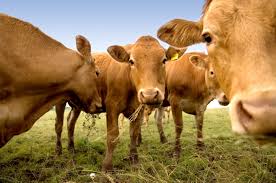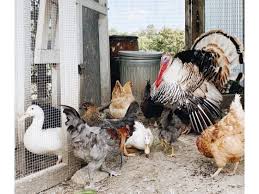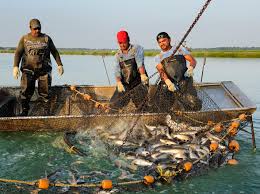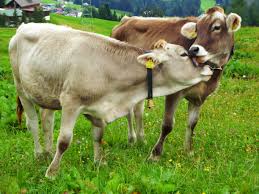Livestock plays a vital role in agriculture, providing food, fiber, and other products essential for human survival. This article explores the importance of livestock, its classification, and the characteristics of various breeds.
Livestock refers to domesticated animals raised for agricultural purposes. These animals are crucial for food production, agricultural labor, and other economic activities. Common types of livestock include cattle, sheep, goats, pigs, and poultry. Understanding the role and management of livestock is essential for sustainable agricultural practices.
Importance of Livestock in Agriculture
Livestock is significant in agriculture for several reasons:
1. Food Production: Livestock provides meat, milk, eggs, and other food products that are essential for human nutrition. For instance, cattle are a primary source of beef and dairy products, while sheep provide meat and wool.
2. Economic Contribution: The livestock sector contributes significantly to the economy through job creation, income generation, and trade. It supports livelihoods for millions of farmers worldwide.
3. Soil Fertility: Livestock manure is a natural fertilizer that improves soil health and productivity. It enriches the soil with nutrients necessary for plant growth.
4. Draft Power: In many developing regions, livestock provides essential draft power for plowing fields and transporting goods, reducing the need for mechanization.
5. Cultural Significance: Livestock often holds cultural importance in various societies, playing roles in rituals, traditions, and social status.
Classification of Livestock
Livestock can be classified based on different criteria, including purpose, species, and production systems. The major classifications include:
1. Cattle: Cattle are classified into two main types: beef cattle, raised primarily for meat production, and dairy cattle, raised for milk and other dairy products.
2. Sheep: Sheep are raised for meat (lamb and mutton), wool, and milk. Different breeds have specific purposes based on these outputs.
3. Goats: Goats are versatile animals raised for meat, milk, fiber (such as cashmere), and skin.
4. Swine: Pigs are primarily raised for meat (pork) and are known for their rapid growth and efficient feed conversion.
5. Poultry: Chickens, ducks, and turkeys are commonly raised for meat and eggs, providing a significant protein source.
Cattle: Beef and Dairy Breeds

Cattle are one of the most important livestock species, divided into beef and dairy breeds, each with distinct characteristics:
1. Beef Breeds: These cattle are raised primarily for meat production. Key breeds include:
i. Angus: Known for high-quality beef with good marbling and tenderness.
ii. Hereford: Recognized for its hardiness and ability to thrive in various climates.
iii. Charolais: Valued for its rapid growth and lean meat production.
2. Dairy Breeds: These cattle are bred for milk production. Prominent dairy breeds include:
i. Holstein: The most common dairy breed, known for high milk yield and distinctive black-and-white markings.
ii. Jersey: Recognized for high butterfat content in milk, making it ideal for cheese production.
iii. Guernsey: Known for its rich, golden-colored milk and good production efficiency.
Sheep: Wool and Meat Production
Sheep are versatile livestock, valued for both wool and meat production. Their classification can be broadly divided into:
1. Wool Breeds: These sheep are primarily raised for their wool. Notable breeds include:
i. Merino: Renowned for fine wool quality and high fiber density.
ii. Romney: Known for its long wool and adaptability to various climates.
2. Meat Breeds: These sheep are raised mainly for meat. Key breeds include:
i. Suffolk: Valued for its rapid growth and high-quality meat.
ii. Dorper: Known for its hardiness and good meat quality, particularly in arid regions.
Goats: Types and Uses
Goats are highly adaptable animals known for their hardiness and versatility. They can thrive in various environments and are raised for multiple purposes.
Types of Goats
1. Dairy Goats: These goats are bred primarily for milk production. Popular dairy breeds include:
i. Saanen: Known for high milk production and gentle temperament.
ii. Nubian: Valued for its rich milk with a high butterfat content.
2. Meat Goats: These goats are raised mainly for meat. Key breeds include:
i. Boer: Renowned for fast growth and excellent meat quality.
ii. Kiko: Known for its hardiness and ability to thrive in tough conditions.
3. Fiber Goats: These goats are bred for their fiber. Notable breeds include:
i. Angora: Known for producing mohair, a luxurious fiber used in textiles.
ii. Cashmere: Produces fine cashmere wool, sought after for its softness.
Uses of Goats
i. Milk Production: Goat milk is nutritious and easier to digest than cow’s milk, making it popular for cheese and yogurt production.
ii. Meat: Goat meat, also known as chevon or goat, is a lean and flavorful protein source.
iii. Fiber: Goats provide valuable fibers used in clothing and textiles.
iv. Land Management: Goats are effective foragers, helping manage brush and weeds, making them useful for land clearing and fire prevention.
Pigs: Breeds and Their Benefits
Pigs are important livestock for their efficient feed conversion and high reproductive rates. They are raised mainly for meat (pork) production.
Breeds of Pigs
1. Berkshire: Known for its tender, high-quality pork with good marbling.
2. Duroc: Valued for its fast growth rate and excellent meat quality.
3. Yorkshire: Known for its large size and ability to produce lean meat.
Benefits of Raising Pigs
i. Meat Production: Pigs are a primary source of pork, one of the most consumed meats globally.
ii. Efficient Feed Conversion: Pigs can convert feed into body mass efficiently, making them a cost-effective livestock option.
iii. High Reproductive Rate: Pigs have large litter sizes, leading to quick herd expansion.
iv. Manure Production: Pig manure can be used as a valuable fertilizer for crops.
Read Also: Dragon Fruits: History, Nutrition, Health Benefits and Growing Guide
Poultry: Chickens, Ducks, and Turkeys

Poultry includes various domesticated birds raised for their meat and eggs. Chickens, ducks, and turkeys are the most common poultry types.
Types of Poultry
1. Chickens:
i. Broilers: Raised primarily for meat production. Known for rapid growth and efficient feed conversion.
ii. Layers: Bred for egg production. High-yielding breeds include White Leghorn and Rhode Island Red.
2. Ducks: Ducks are versatile birds raised for both meat and eggs. Notable breeds include:
i. Peking: Known for its meat quality.
ii. Khaki Campbell: Valued for high egg production.
3. Turkeys: Turkeys are primarily raised for meat. Popular breeds include:
i. Broad Breasted White: Known for its size and meat quality.
ii. Heritage Breeds: Such as Bourbon Red, valued for their flavor and traditional farming methods.
Benefits of Poultry
i. Meat and Egg Production: Poultry provides a significant source of protein for human consumption.
ii. Economic Contribution: Poultry farming creates jobs and supports local economies.
iii. Manure: Poultry manure can improve soil fertility and is often used as an organic fertilizer.
iv. Land Utilization: Poultry can be raised in smaller spaces compared to larger livestock, making them suitable for small-scale farms.
Horses: Working and Recreational Breeds
Horses have been integral to human civilization for centuries, serving various roles in agriculture, transportation, and recreation.
Types of Horses
1. Draft Horses: These horses are bred for heavy work and pulling loads. Examples include:
i. Clydesdale: Known for their strength and distinctive appearance.
ii. Percheron: Valued for their endurance and versatility.
2. Riding Horses: These horses are bred for riding and recreational activities. Popular breeds include:
i. Thoroughbred: Known for their speed and athleticism, often used in racing.
ii. Arabian: Valued for endurance and versatility in various riding disciplines.
Uses of Horses
i. Work: Draft horses are essential for heavy farm work, such as plowing and hauling.
ii. Recreation: Horses are used in various recreational activities, including riding, racing, and equestrian sports.
iii. Transportation: Historically, horses were vital for transportation and trade.
Read Also: The Anise Fruits: Economic Importance, Uses, and By-Products
Aquaculture: Fish and Shellfish Farming

Aquaculture involves the farming of aquatic organisms, including fish and shellfish, to meet the growing global demand for seafood.
Types of Aquaculture
1. Fish Farming: This includes the cultivation of various fish species, such as:
i. Tilapia: Known for its fast growth and mild flavor.
ii. Salmon: Valued for its high nutritional content and popularity.
2. Shellfish Farming: This involves the cultivation of shellfish species, including:
i. Shrimp: Highly sought after for its taste and versatility.
ii. Oysters: Known for their flavor and ecological benefits in water filtration.
Benefits of Aquaculture
i. Sustainable Seafood Production: Aquaculture can provide a sustainable source of seafood, reducing pressure on wild fish populations.
ii. Economic Opportunities: Aquaculture creates jobs and supports local economies in coastal and inland areas.
iii. Food Security: Fish and shellfish farming contribute to food security by providing a reliable protein source.
Benefits of Raising Livestock
1. Source of Food: Livestock provide essential food products such as meat, milk, eggs, and cheese, contributing significantly to human nutrition and dietary needs.
2. Economic Contribution: Livestock farming contributes to local and national economies, generating income through sales of meat, dairy products, wool, and other livestock by-products.
3. Employment Opportunities: Raising livestock creates jobs in various sectors, including farming, processing, transportation, and marketing, contributing to rural employment.
4. Soil Fertility: Livestock manure is a natural fertilizer that enriches soil fertility, enhancing crop production when integrated into crop farming systems.
5. Diversification of Income: Livestock farming allows farmers to diversify their income sources, reducing reliance on a single crop and spreading financial risk.
6. Cultural Significance: In many communities, livestock hold cultural and traditional significance, contributing to local customs, celebrations, and social structures.
7. Utilization of Marginal Lands: Livestock can be raised on lands unsuitable for crop production, making efficient use of available resources.
8. Sustainable Waste Management: Livestock can convert agricultural by-products and waste into valuable food, reducing waste in agricultural systems.
9. Genetic Improvement: Through selective breeding and genetic technologies, farmers can improve livestock traits, enhancing productivity and resilience.
10. Climate Resilience: Certain livestock breeds are adapted to specific climates, providing food security in challenging environmental conditions.
Challenges in Livestock Management
1. Health Issues: Livestock are susceptible to diseases that can affect productivity and cause significant economic losses. Regular veterinary care and vaccination programs are essential.
2. Feeding and Nutrition: Providing adequate nutrition is critical for the health and productivity of livestock. Fluctuations in feed availability and prices can pose challenges.
3. Environmental Concerns: Livestock farming can contribute to environmental issues such as overgrazing, soil degradation, and greenhouse gas emissions, necessitating sustainable practices.
4. Market Fluctuations: Livestock prices can be volatile, affected by factors like supply and demand, disease outbreaks, and market access, impacting profitability for farmers.
5. Regulatory Compliance: Farmers must adhere to regulations regarding animal welfare, health standards, and environmental protections, which can be complex and time-consuming.
6. Labor Shortages: Finding skilled labor for livestock management can be a challenge, especially in rural areas where the population may be declining.
7. Infrastructure Limitations: Inadequate infrastructure, such as transportation and storage facilities, can hinder the efficient movement and sale of livestock and their products.
8. Water Scarcity: Access to clean water is essential for livestock health and productivity. Water shortages can lead to increased stress and reduced performance in animals.
9. Predator Control: Livestock are often at risk from predators, requiring effective management strategies to protect them and minimize losses.
10. Climate Change: Changes in climate patterns can affect pasture availability, water resources, and livestock health, requiring adaptive management strategies to cope with these impacts.
Do you have any questions, suggestions, or contributions? If so, please feel free to use the comment box below to share your thoughts. We also encourage you to kindly share this information with others who might benefit from it. Since we can’t reach everyone at once, we truly appreciate your help in spreading the word. Thank you so much for your support and for sharing!
Read Also: Chicken Brooder House – Complete Chicks Brooding Care Guide

